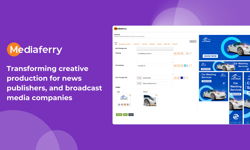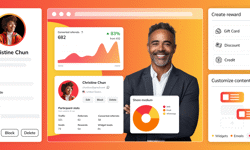The last ten years have been a tumultuous time for all media companies, large and small. The changes to the industry have been enormous: changing business models, multiple devices, new players and marketing automation. Through all the extraordinary change, though, one thing has remained constant, the value of audiences.
Most publishers will recognise the shift from platforms to audiences over the last decade, as changing distribution channels and the incredible proliferation of mobile devices has made the user, not the site, the focus of most commercial attention, whether internally by our own marketers or externally through commercial partners and, most particularly, ad agencies.
The prize, most would agree, is the seamless tracking of identifiable users across devices, profiling their activity and journeys across your own sites and the wider web. This shift of focus to the user, whilst very sensible and potentially profitable, also marks a shift in thinking away from ‘destination publishing’.
Most publishers have, for many years, been relentlessly focused on driving traffic to their own sites. More page views, more ad views, more users and more time on site. Or to put it another way, an absolute focus on the ‘destination’ and not who the user is and their value. This has inevitably led to a devaluation of the publisher’s key USP, the value and uniqueness of the audience. Rather than building the audience story, it has been diluted in the race for more traffic and pages. And, however unique the publisher feels their audience is, all their users without fail, visit other sites, and have other destinations they favour.
Ad agencies were quick to understand this. As ad tech and marketing automation became more sophisticated, they were in a position to look at behaviour and profile users, using cookies to build their own targetable groups. This started the driving down of CPM rates, and demands for more transparency from publishers about audience demographics, ROI and effectiveness. But in their haste to devalue the publisher’s USP, they all missed one key point. Agencies don’t have audiences, but publishers do!
It is true to say that tracking user behaviour and intent builds profiles, and sophisticated media buyers can use such criteria to minimise waste and maximise effectiveness. But when it comes to most B2C and B2B media businesses, users are visiting the sites because of the brand, the content or the community. They are engaged with the sites and most media owners should have quite detailed first party data on who they are, what they do and what their value is.
Too many publishers haven’t played the agencies at their own game, using behaviour and their own first party data to profile and segment users, so they can then offer clients what agencies do, the ability to target them on their own sites with a greater degree of sophistication and effectiveness, but more importantly on the wider web, when these same known users are on other destinations!
The benefits of this should be obvious, but it feels counter-intuitive to many publishers as monetising your audience when they are on other sites, particularly potential rivals, is the antithesis of conventional media theory. So what are the opportunities that exist and where are the greatest returns if you do adopt this approach?
1. Building Data Segments
Key to understanding and better monetising your audience is to build data segments that reflect the different characteristics of your audience. A segment is a group of users or companies, which share quantifiable attributes that matter to your business. Most segmentation applies a number of different approaches for different business reasons, such as behavioural, demographic, regional and sometimes even psychographic.
While you can create as many segments as you want, good segmentation should focus only on those that are large enough to be of real value to your business.
To do this, think of attributes as quantifiable characteristics that can easily be applied to different aspects of your core audience. They should accurately describe what people are (job roles, functions, income and authority to spend as examples) and what people do (behaviours that can be observed, such as devices used, websites visited and content consumed).
You can build first-party audience segments without serving any ads by adding a 1x1 transparent audience pixel tag to your site or mobile app, through your ad serving software. In DoubleClick for Publishers (DFP), this is very easy to do using DFP Audience, with the pixel tag being added at no extra cost, without being charged for serving a DFP impression.
You can use the same pixel tag process to build first-party segments for both web and apps. However, there may be a difference in the way cookies and mobile advertising IDs (AdID or IDFA) are added.
Cookies will automatically be added to the segments that match the ad unit and key-values specific in the pixel tag. Whereas mobile advertising IDs will automatically be added only if you use a software development kit (SDK) designed to provide conversion tracking, it is also possible with DFP to use a publisher provided identifier (PPID) for audience segmentation in place of a cookie or mobile advertising ID. Using a PPID allows you to have a consistent identifier across devices. The PPID allows publishers to send DFP an identifier for use in frequency capping, audience segmentation and targeting, sequential ad rotation and other audience-based ad delivery controls across devices. This identifier is used alongside any other identifiers that are available to DFP, such as cookies. The identifier must be hashed, anonymous, and must not contain any personal information, third-party identifiers or device IDs.
At Incisive, we are also using customisation services such as Cxense to aggregate and analyse user behaviour across our sites to better understand our content and inform our segmentation strategy. This is integrated with DFP.
By doing this, we have a much greater insight into the behaviour and engagement of our users and have increased engagement with our content. This is a key factor in subscription renewals and because it is integrated with our ad tech stack, can be deployed to our users across the web as well as on our own sites.
2. Audience retargeting
Retargeting is a cookie-based technique that uses simple Javascript to anonymously ‘follow’ your users around the web. Each visitor who comes to your site has a cookie dropped on them. Whenever a new visitor comes to your site, this cookie generates a random value which is put into the user’s browser, so users can be tracked and identified throughout the web.
This cookie identifies the user as one of your previous site visitors and allows you, through your ad tech stack, to know when to serve your ads to them, thus ensuring that your ads are served only to people who have previously visited your site. Whilst effective, you are only identifying a previous visitor rather than a unique individual and, as such, are targeting a pixel not a person.
If you have a paywall and require users to log into your site, this process can be even more accurate as a general user cookie can become a unique alpha numeric user ID, using a technology called MD5 hash (or PPID in DFP), which in effect converts the email address into an identifiable (only to you) user number, so other first party data you hold can be appended to it, in effect targeting a person and not a pixel!
For B2B sites which are more commonly locked, this is a tremendous advantage, and one which agencies struggle to compete with, as without a means of logging on and creating the unique user ID, they can only target the pixel, and have no guarantee that the user is of any value. They merely share behaviour with other users who have been identified through behaviour (which sites and content they are visiting) or intent (which ads or services they have clicked on).
The value of this technique is quite simple: it allows you to buy back your identified users using real time bidding, through your ad tech platform, to serve either house ads or content calls to action to bring them back to your site, when on other media owners’ sites. This increases engagement and provides monetisation opportunities through the usual business model. At Incisive, we use this most often to target known users with specific event offers, serving them an ad with a relevant and enticing offer to bring them back to our sites and sign up, as well as using the same technique to target trialists with the objective of converting them into paid subscribers. We also keep ‘warm’ users who have downloaded assets from our lead generation services to keep them engaged with the content they have requested, making the lead more valuable when the client finally follows up.
Whilst this might seem like a costly exercise, it is in fact a relatively cheap means of converting users into paying customers and is likely to be cheaper and more targeted than email marketing.
Services like LiveIntent also allow publishers to do the same thing with email, targeting identified users on other publishers’ email services, with ads being bought in real time like RTB traded impressions on ad exchanges and private networks.
Retargeting is effective because it concentrates advertising spend on users who have recently visited your site, and if enriched with data can then become a valuable marketing channel to ensure the right messages get put in front of the right users. It works best in conjunction with inbound and outbound marketing or demand generation. When using this technique with our users, we have seen improved clickthrough rates when users are exposed to our brands offsite, because they are familiar with them, the message is targeted and because they are not expecting to see our messages there.
3. Audience extension
Audience extension allows publishers to make more revenue from their site visitors by allowing advertisers to target their known visitors when they are on another website, but packaged as part of an ‘extended’ advertising campaign. The publisher uses the same cookie, MD5 hash ID or PPID used for retargeting, but unlike retargeting, the ads served will be an extension of a campaign running on their own website. The users will be bought in real time using an ad exchange such as Google AdX, and will provide the publisher with increased scale so that campaigns too large to run exclusively on their own site can be fulfilled by extending them onto other sites. Typically, this extra reach is priced below on-site inventory and is typically 20–30% cheaper. It has the advantage of being acquired for relatively low cost so the margin to publishers is extremely attractive, and because they are known users, this approach is valued by advertisers. The value to publishers should be obvious; more inventory can be included, helping to fulfill campaigns that may exceed available inventory on the publisher’s own site, and can bring the overall CPM down for the advertiser, who is safe in the knowledge that these users are known to the publisher.
4. Content Discovery
Content discovery is a process that helps users explore new topics or information without them having to search for it, using algorithms to find and match content of relevance to the user. Typically, this will take the form of ‘Recommended Posts’, ‘also on the web’ or ‘Suggested Content’. Content discovery platforms, such as Outbrain and Taboola, give publishers the opportunity to fill these slots with their own content, using an algorithm to match your first party content with relevant articles or posts on other sites your target audience visits.
Sharing your content through these content discovery services exposes your users to your content and brand on other sites they rate, reinforcing its quality and relevance to them and helps bring these users back to your sites in a highly engaged way.
At Incisive, we have used Taboola in this way to also address inventory pressure, using open access articles only (ie. articles from our paywalled subscription sites that are free to read, and which are also used to improve SEO). Typically, for each campaign, we will get an uplift of 10-15% new sessions and around 15-25% new ad impressions for both external and house campaigns. By carefully defining our criteria, we regularly get high quality and relevant traffic back from key national newspaper sites as well as business sites such as Bloomberg, Reuters, CNBC and Business Insider. This approach has also proved successful for newsletter sign-ups and trialist conversions.












